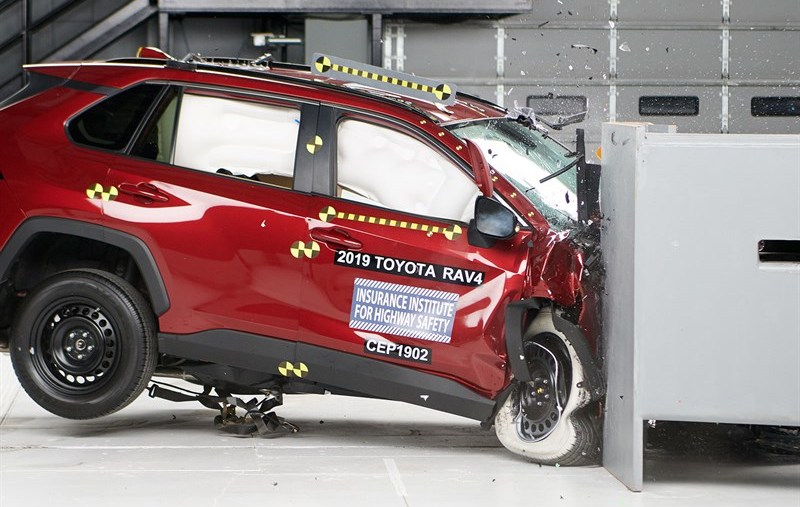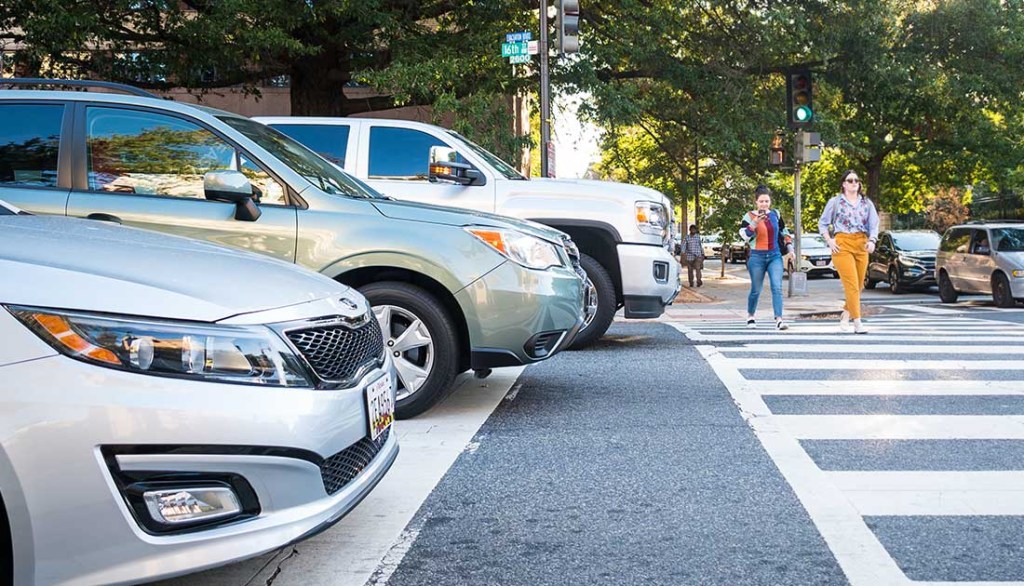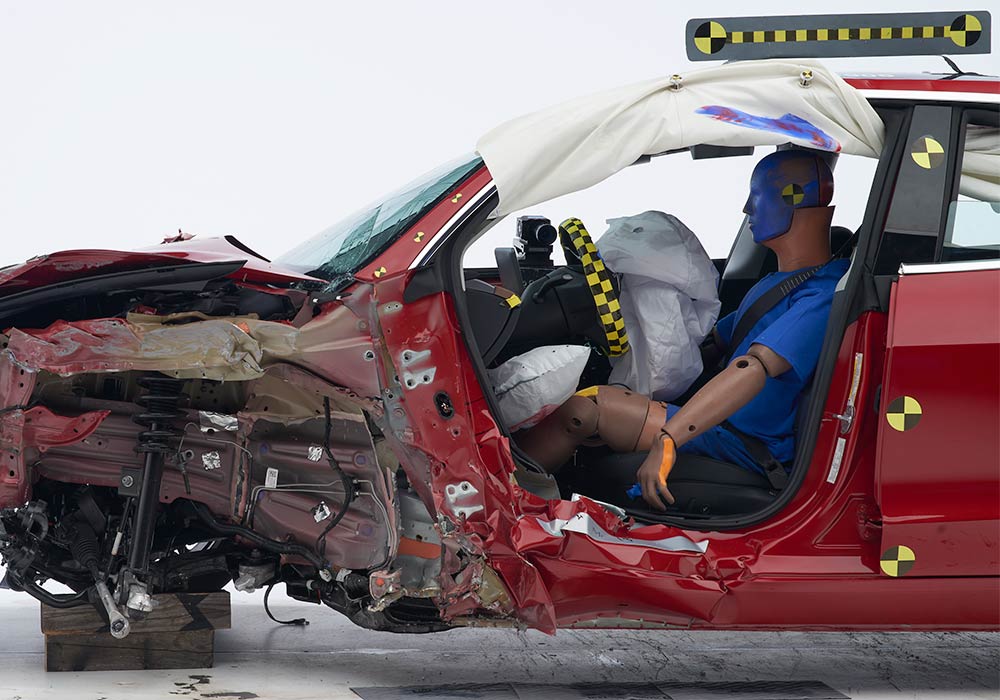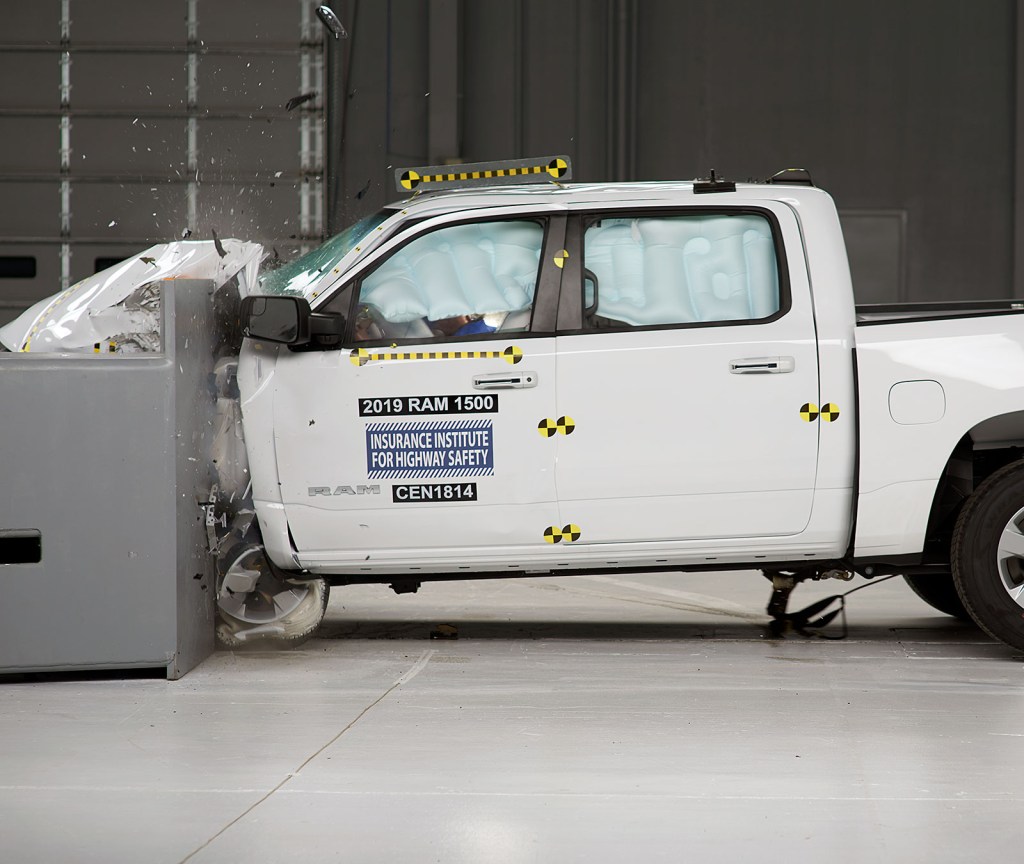
IIHS Study Suggests Trucks Are a Danger on the Road
Safety isn’t just a selling point: it’s a necessity. With pedestrian deaths on the rise, the Insurance Institute for Highway Safety has begun adding additional requirements into its safety ratings. Recently, the IIHS also released a study into the compatibility between cars and SUVs and trucks. While SUV safety rating improvements have yielded good results, the same cannot be said of pickups.
IIHS Study Background

The new IIHS study, examining vehicles made from 1989-2016, is actually an update on one run in 2012. Then, as now, the purpose was to study how well passenger cars interacted with larger SUVs and trucks on the road. The data was gathered from analysis reports on vehicles between one and four years old.
The researchers were interested in two things: driver risk and driver aggression. Risk was measured by comparing driver deaths per million registered vehicle years across vehicle sizes and types. That ‘registered vehicle year’ means one vehicle registered for one year. Think of risk as measured in ‘driver death rate’. Aggression, on the other hand, was measured by comparing partner driver (non-truck driver) deaths across vehicle types and sizes.
Study Results

For SUVs, the results are rather rosy. From 1989-1992, SUVs were 132% more likely to kill a passenger car driver in a collision than when a car crashed into another car. However, by 2013-2016, SUVs were only 28% more likely to do the same. There is clearly still more work to be done, but it is apparent that a greater focus on safety has reduced the odds of a fatality in SUV-car collisions.
Unfortunately, pickups are still far behind. In the same 1989-1992 and 2013-2016 periods mentioned, pickup-car collisions were 159% and 158% more likely to kill the car driver than car-car crashes. Pickups may have added more safety features, but they are still very dangerous to passenger cars.
What Do the IIHS Study Results Mean?

Both the IIHS and Autoblog (the latter in their own report on the study) go into detail regarding these results.
On the surface, it would seem strange that SUVs improved so much, while pickups have essentially stagnated. Both SUVs and trucks are large, high-riding vehicles. Why would one be better than the other in terms of safety? Just by the laws of physics, when a large object hits a small object, the smaller one receives more damage. Data point of me, but when a new GMC SUV rear-ended the 2000 Honda Odyssey minivan I was driving, the SUV came away with maybe one or two small scratches. The van? The trunk door was crumpled, and the rear bumper was punctured and cracked in several places. But everyone drove away unhurt.
Part of that is due to studies like this. As Autoblog details, back in 2003, the IIHS was instrumental in persuading automakers to make truck and SUV designs more compatible with passenger cars. With high front ends and different bumper designs, pickups and SUVs would often bypass many passenger car safety features. The National Highway Traffic Safety Administration was also urging the same at the time.
But it’s not as if passenger car safety engineering has remained unchanged, either. Small cars and minivans have to pass the same NHTSA tests, and go through the same IIHS testing, as trucks and SUVs. Larger cars are no longer automatically the safer bet.
So, if the 2003 agreement helped SUV results, why hasn’t it helped pickups? Most likely, weight disparity.
The Weight of the Issue

The IIHS’ pickup data includes both heavy and light pickups. The latter is classified as having a curb weight between 3500 and 400 lbs. There are definitely SUVs that weigh that much. And actually, SUVs have less to worry about from pickups due to weight disparity. When the IIHS examined death rates in SUV-pickup collisions, there was no longer a difference between light truck-SUV collisions and heavy truck-SUV ones. In short, safety improvements have offset weight disparity.
But that doesn’t help passenger cars. Arguably, it might be hurting them even more. Adding additional crash and safety features onto any vehicle adds additional weight. This is not a suggestion that these features be removed, however.
Instead, the IIHS suggests reducing truck weight overall as one way to reduce incompatibility. Autoblog mentions the 700 lbs Ford saved by switching from steel to aluminum in its F-150. Imagine if every other truck followed suit. Another option? Crash avoidance features. Things like automatic braking, lane assistance, and blind-spot monitoring. After all, there can’t be a fatality in a collision if the collision never occurs.


